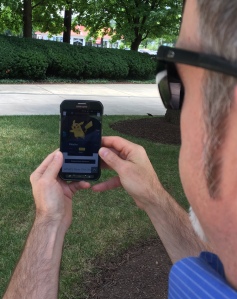Mark Resner
Senior Security Specialist
October 10 was the deadline for five states to comply with the REAL ID Act of 2005, implementing federal standards for tamper-proof identification documents such as driver’s licenses. According to the Department of Homeland Security, effective Jan. 30, 2017, “nuclear power plants may not accept for official purposes driver’s licenses and state IDs from a noncompliant state/territory without an extension.”
 The five states now coming under REAL ID Act enforcement are Kentucky, Maine, Oklahoma, Pennsylvania and South Carolina. They join Minnesota, Missouri and Washington state on DHS’s “non-compliant” list. Several other states have extensions in effect through either June or October of next year, allowing federal facilities to accept their existing identification documents while the states try to come into compliance with the Act’s requirements.
The five states now coming under REAL ID Act enforcement are Kentucky, Maine, Oklahoma, Pennsylvania and South Carolina. They join Minnesota, Missouri and Washington state on DHS’s “non-compliant” list. Several other states have extensions in effect through either June or October of next year, allowing federal facilities to accept their existing identification documents while the states try to come into compliance with the Act’s requirements.
What does this mean for nuclear plants? Will residents of non-compliant states have trouble gaining access to plants?
For the majority of people entering nuclear plants – those who work there – this will have virtually no effect. State issued IDs such as driver’s licenses are never the sole data point for admitting anyone to a nuclear plant, either a worker or a visitor. Nuclear power plant workers have employee badges issued by their employers following an extensive background and criminal records check, psychological assessments, and drug and alcohol testing.
Visitors are generally known in advance of their arrival, screened through the industry database against a list of individuals who would be denied access, approved by a nuclear plant employee who has undergone the required background screening, and continuously escorted while inside the protected area of the facility.
The REAL ID program is intended to enhance the nation’s security by making it harder for terrorists to obtain state-issued identification documents. The NRC’s access authorization requirements for nuclear power plants (set out in regulation at 10 CFR 73.56 and 10 CFR 73.57) already go beyond REAL ID in ensuring anyone allowed into the protected area of nuclear plants is properly vetted.

 The Pokémon Go game lets users chase and catch virtual creatures with their cellphone cameras. However, Pokémon Go and other games that use the GPS signals in our phones are creating safety and security issues. Local law enforcement officials across the country have cautioned folks to pay attention while playing and be careful not to wander into traffic (warnings that have not always been heeded). The phrase “heads up” takes on new meaning here.
The Pokémon Go game lets users chase and catch virtual creatures with their cellphone cameras. However, Pokémon Go and other games that use the GPS signals in our phones are creating safety and security issues. Local law enforcement officials across the country have cautioned folks to pay attention while playing and be careful not to wander into traffic (warnings that have not always been heeded). The phrase “heads up” takes on new meaning here.